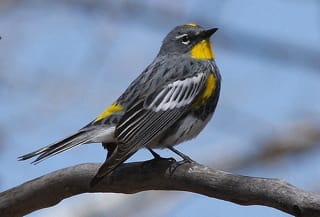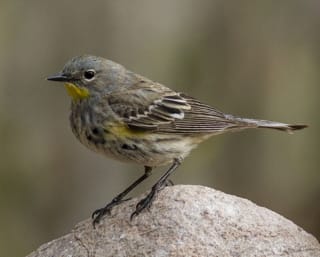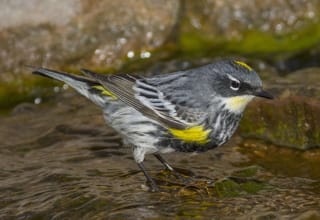Initially this guide displays common birds of all types that are flying right now in our area. Use the selectors below to view rare birds, view birds flying any time, restrict the output to a certain shape of bird, or search by name.
New Mexico is on the western edge of the Central Flyway which is one of the major migration pathways between north and south for birds traveling between breeding and wintering grounds along the Rocky Mountains. This has resulted in the state having an incredible diversity of birds with over 550 different species reported. A little more than half of this number are sighted annually on the Pajarito Plateau. Some of these birds are full-time residents, some migrate here for a few weeks or months, and other are only seen briefly as they pass through the region.
This guide features many of the birds known to frequent Los Alamos county by when they are likely to be seen in the area. You can get additional information on local birds by joining PEEC Birders or going to the eBird website. eBird also includes lists of rare bird sightings and birding hot spots.
Bird References
Birdweb
Cornell Lab of Ornithology
eBird
eNature
Institute for Bird Populations
National Audubon Society
New Mexico Ornithology Society
What Bird
xeno-canto
Subject Area Experts (all guides)
Steve Cary (butterflies)
Beth Cortright (insects)
Terry Foxx (invasive plants)
Leslie Hansen (mammals)
Richard Hansen (fish, mammals)
Dorothy Hoard (butterflies, trees)
Chick Keller (flowers, herbarium)
Shari Kelley (geology)
Kirt Kempter (geology)
Garth Tietjen (reptiles)
David Yeamans (birds)
Web Development and Content Management
Pat Bacha
Jennifer Macke
Graham Mark
Akkana Peck
Contact
Please contact us for local nature questions and sightings. We welcome comments, corrections, and additions to our guides.
For more information about local nature, please visit our Nature Blog or subscribe to PEEC This Week.
Make Selection
 Photo: Audubon male by J.N. Stuart  Photo: Audubon female by Mouser Williams  Photo: hybrid male by Mouser Williams |  Yellow-rumped Warbler, Audubon's Warbler, Myrtle WarblerYRWA (Setophaga coronata)Family: Parulidae (Wood Warblers) Size: 5 - 6 in (13 - 15 cm) Flies: Apr 21 - Nov 21 Morphology: in summer both sexes are gray with white on the wings and yellow on the sides and rump, and in winter they are paler with more brown; overall, females are paler and more brown than males ; the “Myrtle” subspecies is characterized by a white throat and dark facial mask; the “Audubon” subspecies is characterized by a yellow throat and more white on the wings; hybrids can show traits of bot Status: native; common Food source: insects, spiders, and berries Habitat: coniferous forests, mixed forests There are two subspecies of Yellow-rumped Warbler: Myrtle, primarily seen in the east, and the Audubon, dominant in the west. These two subspecies can interbreed where their ranges overlap, including the Canadian Rockies. The prevailing subspecies in the local area is the Audubon with the occasional hybrid observed. These birds are the most common warblers in North America and are capable of wintering farther north than other warbler species. They sing from the high canopy of the forest with a chirp or "contact call" that keeps the flock together. Yellow-rumped Warblers have many different foraging strategies: searching among twigs and leaves, flying out to catch prey, hopping along the ground, and clinging to tree trunks and branches. They tend to forage in flocks in winter. They normally have 2 broods per year. Nests are usually found on a branch away from the trunk of a tree. Info Photos Distribution Frequency |
